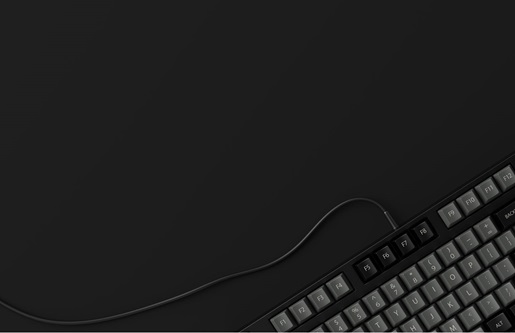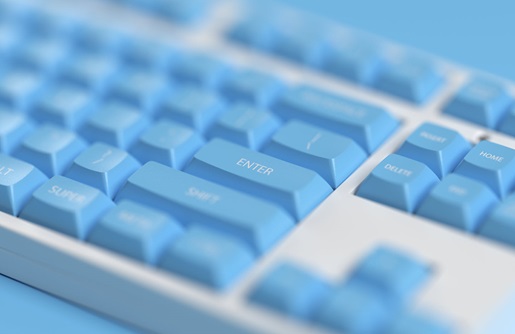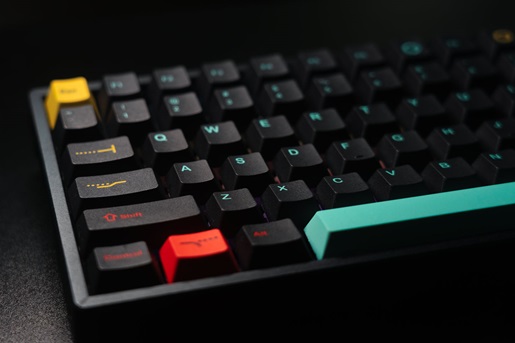Start your next DIY keyboard project on solid plastic (or aluminum, or wood)
With visions of switches and keycaps dancing in your head, your choice of custom mechanical keyboard case may not be the first thing you think of when planning out the keyboard build of your dreams. But a house is only as strong as its foundation. Spending a little extra time to pick a case that’s compatible, sturdy, and meets your preferences for looks, feel, and sound will go a long way toward making sure your dream board survives the harsh transition to reality.
If you’ve been part of the hobby for a while, you may already have strong feelings about the best mechanical keyboard switches and best keycaps. Don’t worry — by the time you’re done reading this guide, you’ll be well on your way to having strong feelings about DIY mechanical keyboard cases, too.
Looking to create your own custom keyboard? This guide will show you all the parts you need to get started.
What is a custom mechanical keyboard case?
A custom mechanical keyboard case is a frame that holds the internal components of a mechanical keyboard, typically sold on its own or as part of a mechanical keyboard kit. They often include rubber feet to minimize incidental movement as well as any screws required to fasten the case and other components together.
It may not sound very glamorous, but the case plays a central role in establishing both the feel and sound of a board. It influences the feel because the case’s construction (and sometimes adjustable feet) determine the angle of your hands when typing. Meanwhile, the case acts much like the body of an instrument in shaping and amplifying the sound of keystrokes.
Did You Know?:The HHKB layout repositions the Control key to provide more ergonomic access to common shortcuts and macros.
Your choice of case should be dictated first and foremost by the keyboard size you want to build, as well as the type of PCB you plan to use. With those details set, you have two more choices to make. First, you should determine what type of material you want your custom mechanical keyboard to be made out of. Here’s a quick primer on four of the most common types:
- Plastic keyboard cases tend to be the cheapest and easiest to find, as well as the most lightweight and portable. Keyboard enthusiasts who value a deep “thock” keypress sound may want to investigate polycarbonate cases specifically.
- Acrylic cases often feature clear or frosted transparent designs. This makes them a great choice for visually striking builds that play up RGB lighting.
- Aluminum cases are well-suited for making builds that feel weighty and solid, especially if you’re in pursuit of a higher-pitched “clack” sound. Other metals, such as stainless steel, are sometimes used for cases but are much less common.
- Wooden cases tend to be expensive and require the most upkeep, but their weight and natural warm feeling make them a popular choice for high-end designs.
Finally, you should decide which kind of mount style you prefer for your case. Mount style determines how the PCB will be mounted to the board, and whether your case should be accompanied by a mechanical keyboard plate. This infographic created by keyboard designer Thomas Baart does an excellent job of laying out the different mounting styles, as well as summarizing some of the common benefits and drawbacks of each.
4 of the best DIY mechanical keyboard cases
Now that you know how to pick the right custom mechanical keyboard case for your build, here are four solid choices to get you started.
KBDFans 60% Plastic Mechanical Case
This 60% keyboard case is made of standard ABS plastic and, aside from the fact that it’s available in a range of colors, there’s nothing fancy about it. But its affordable price of $19 is a strong argument that it can be surprisingly affordable to build your own custom mechanical keyboard if you know where to look.
Did You Know?:The latest HHKB keyboard line features a snow-white case and matching keycaps for a minimalist look that fits in anywhere.
Tex TKL Acrylic Case
The slightly transparent, acrylic body of this DIY mechanical keyboard case gives new life to any RGB setup, adding dreamy diffuseness to your desktop light show. Its TKL keyboard layout makes it a great option for budding keyboard enthusiasts who want a board that saves space with minimal adjustment to muscle memory. You can pick one up for $124.
KBD75 V2 75% Anodized Aluminum Case
This anodized 75% keyboard aluminum case is both solid and corrosion-resistant, and five color options and an acrylic side strip to show off your RGB underglow prove it’s here for a good time and a long time. Granted, you’ll pay $125 for the privilege of building with it, but at least you don’t need to worry about it breaking down before the rest of your components.
Royal Glam 60% Wooden Case
Want to bring a little natural elegance and comfort to your desk? This 60% keyboard case from Royal Glam is made of black walnut, perfect for classing up your study (or cubicle). It costs $94, which is still cheaper than buying your own lumber and woodworking tools.







